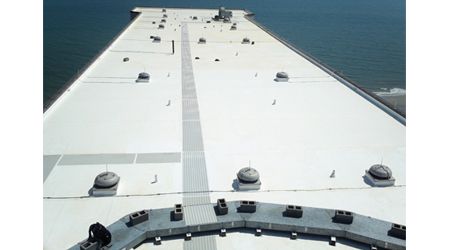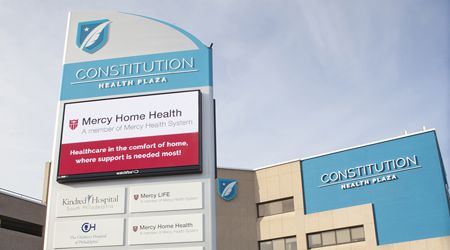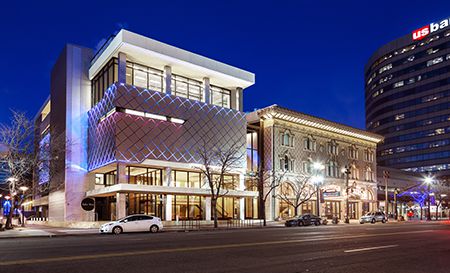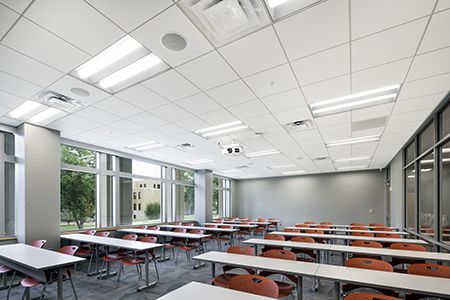view all Case Studies
College Figures Out The Right Equation for Energy Management
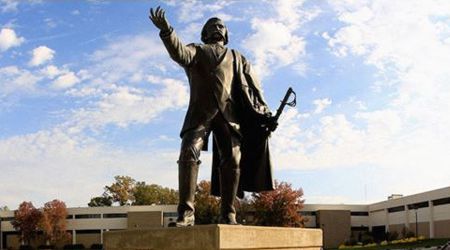
The team at John A. Logan College realized that in order to get energy costs under control, you have to address all three drivers that impact spend: how you buy it, how much you use, and when you use it.
December 1, 2015 -
Energy Efficiency
Serving just shy of 8,000 students, John A. Logan College (JALC) in Carterville, Ill., might not be the largest school in the Illinois Community College System, but it certainly stands out as one of its leaders in energy management, going toe-to-toe with much bigger colleges and universities with larger budgets to spend on energy efficiency programs. “When we started getting serious about energy management, we were ranked right in the middle of the pack in terms of energy efficiency among community colleges. Today, we’re ranked 3rd in the state,” says Tim Gibson, JALC’s Coordinator of Sustainability and Building Systems.
What changed for JALC? First and foremost, it was a new commitment to proactively managing energy versus reacting to a monthly bill. “Traditionally, we’ve managed energy sporadically. We would get our bill, and collectively, we would gasp. Then someone would turn off a light here and there – and we thought that was ‘managing’ energy. We knew we were falling very, very short,” admits Gibson. “About a year ago, we realized we needed to take the next step, starting with a strategic energy procurement process and a broader energy management plan, and that’s when we found EnerNOC.”
Charting a Strategic Course
The team at John A. Logan College realized that in order to get energy costs under control, you have to address all three drivers that impact spend: how you buy it, how much you use, and when you use it. When Dr. Mike Dreith took over as JALC’s President in 2012, one of his first orders of business was to look at the College Master Plan and ensure that there was a solid approach to manage all three drivers. It wasn’t long before the team realized that being more strategic about energy management meant starting at the beginning and rethinking how the college purchased energy. “We had a big gap when it came to energy procurement, policy, and a plan for energy management,” explains Gibson. “We got to thinking that we could really take our procurement to the next level and started exploring ways to improve. In order to do that, though, we recognized that we needed proactive guidance.”
Historically, JALC purchased energy for its main campus through a competitive retailer at a fixed rate. After hearing about the positive work that EnerNOC had done with neighboring Southern Illinois University, JALC enlisted EnerNOC to evaluate whether or not the fixed rate approach matched the College’s budgetary needs and risk profile. EnerNOC conducted a full evaluation of all the options for JALC — from fixed price purchasing plans to a block-and-index approach. After careful evaluation with the JALC team EnerNOC recommended that smaller utility accounts should be converted back to the default utility rate, and helped renegotiate a new fixed rate contract from a competitive retailer.
Supply & Demand: Two Sides of the Same Coin
The college’s ambitious goals weren’t just limited to buying energy better. Brad McCormick, the College’s Vice President for Business Services, took a comprehensive approach, challenging his team to find a way to reduce overall consumption and engage the JALC community more broadly around energy conservation and energy management. However, to start, the team had to tackle its visibility challenges.
While the EnerNOC team and JALC staff were busy designing a Request for Proposal for the College’s supply contract, it became obvious that by using utility bills alone, the staff had very little visibility and information into how the College was consuming energy. “When we would notice unusual charges in the past, we would complain to our supplier, and they would explain a few things, but not enough. We needed more,” says Gibson. “Over the course of the conversations with EnerNOC, we realized that we should be looking at a system where we could track consumption, too. I got off the phone with the EnerNOC team after discussing their capabilities and said, ‘We have got to have that. That’s going to be one of the keys to zapping energy on campus.’” To help streamline the economics, EnerNOC bundled the cost of its energy intelligence software (EIS), which provides the College with detailed analytics, alerting, and reporting functionality, directly into the new supply agreement. “I think we would have found a way to get it done either way, but it makes it much easier when it is built right into the supply contract. It also made it easier for Brad to explain it to the Board.”
The College deployed EnerNOC’s EIS platform, streaming data from both its main campus and the College’s Community Health Education Complex (CHEC), in January 2013. The impact was almost immediate.
Leveraging Visibility to Capture Low Hanging Fruit
Scott Hunziker, a HVAC maintenance technician at the College, explains just how powerful access to data can be for changing behavior on campus: “The EnerNOC platform lays out graphs of true energy usage right in front of people. It opens their eyes to how little changes can make a big difference. There are five of us that log into the platform regularly, but the data in there helps me get all 600 staff members aligned.”
The information also enabled Gibson and Hunziker to quickly identify some of the biggest energy culprits on campus, and realize that the remedy wasn’t always using less, but rather, being more strategic about when energy is consumed. Because energy for the CHEC is purchased through a local co-op, not the College’s master supply contract, and exposure to peak demand charges is high at $14/kilowatt, managing peaks at the CHEC was a top priority for Gibson and team.
“I was looking at the data in the EnerNOC platform and noticed a huge demand spike on a day when the building wasn’t even being used. It made no sense. At first we thought it was a mistake,” recalls Hunziker. After overlaying temperature data with interval demand data, Hunziker was able to deduce what caused the issue. The CHEC houses the College’s Aquatics Center and has a lot of windows, which causes the facility to be particularly sensitive to temperature swings. “This past winter was extremely cold, but one day the sun came out and we hit 55 degrees. Then we realized that the 12 air conditioning units kicked on because that’s what the building is programmed to do when it’s warm and sunny. It was ironic that the demand charge we set for February was based on a 55 degree, sunny day,” says Hunziker. “Knowing exactly what happened allowed us to make some adjustments to the units so that doesn’t happen again. That type of diagnostics would be nearly impossible if we were relying on utility bill data alone.”
Having access to real-time data across each of the College’s facilities allowed the team to focus in on other sources of waste on campus. The College’s vocational building, which houses the school’s automotive department, had an unusual base load pattern. Upon investigation, Gibson and team realized that two large air compressors were being left on overnight. “Now the class just comes in and turns them on in the morning and the cleaning staff is instructed to turn them off at night if they find them still running,” explains Gibson. “That’s a great example of easy behavioral change, not just with the facilities staff but across our community – it’s the kind of change that starts to shift the overall mentality on campus.”
Realizing the Value of Smarter Energy Management
Energy costs are down 11 percent year over year following the deployment of EnerNOC’s software. “Since this winter has been so much colder than normal, those savings numbers are really impressive,” says Hunziker. “That money represents jobs. It represents lower tuition for our students.” But the financial benefits are just the beginning. Now the JALC facilities team has a data-driven way to verify that what they’re doing is working. “We have a lot of leeway to make decisions that we think will save electricity and gas. If we have an idea and it looks good, we take off and go. But in the past, we couldn’t measure impact. Even if it looked good and felt good, we didn’t really know,” notes Hunziker. “Now we have a way to back it up. It’s cut and dry, and if it doesn’t work, it’s evident quickly and we can go back and try something else. Waiting for the monthly bill to get that kind of feedback just isn’t an option.”
The new level of energy visibility has inspired more awareness across campus, and an opportunity to engage with the community. “We have guys that log in from home, at night, on weekends,” says Gibson. The EnerNOC software is also used in the school’s Energy Auditing Class, teaching future energy engineers and facility management professionals skills that will carry into their careers.
The whole campus has rallied behind a goal of reducing energy consumption on campus by 5 to 8 percent this year and to put up a solid showing at this year’s Campus Conservation Nationals. This is the first year that community colleges have been able to compete in the nationwide challenge, and the JALC Green Committee is confident that armed with the EnerNOC tools, they’re going to take big strides towards energy conservation. “Part of the requirement to compete in the challenge is to report energy usage at a very granular level. We didn’t see any way that we could enter until we got the EnerNOC platform in place,” says Gibson. “The competition is the perfect vehicle for changing behavior. It’s an eye opener for people that otherwise don’t think about how much energy costs.”
Next
Read next on FacilitiesNet









